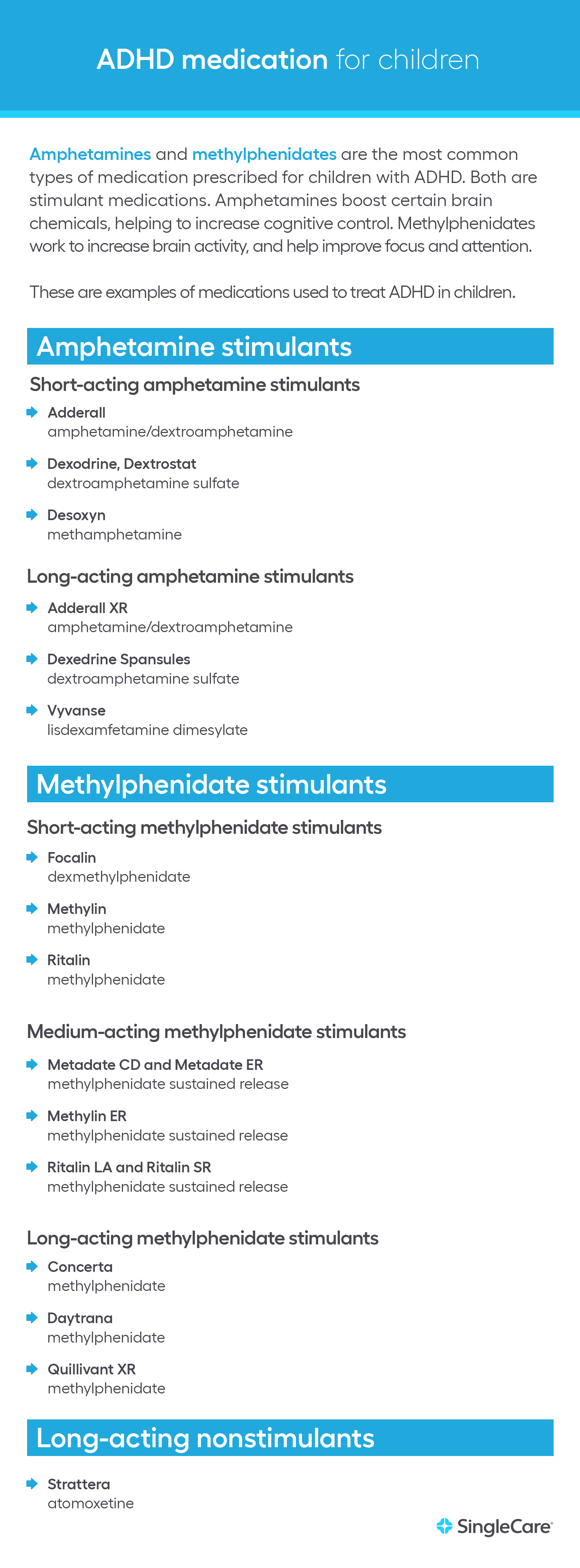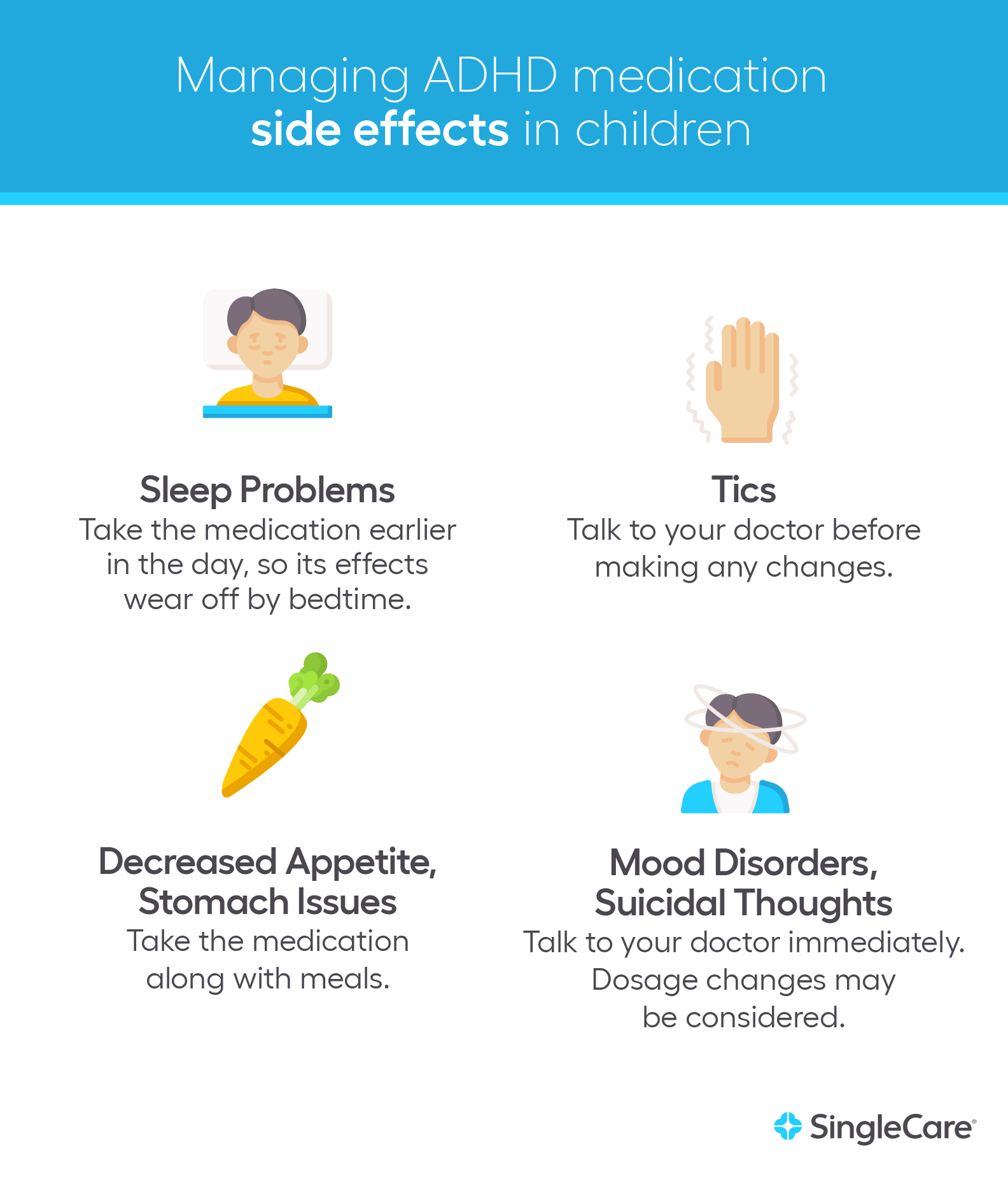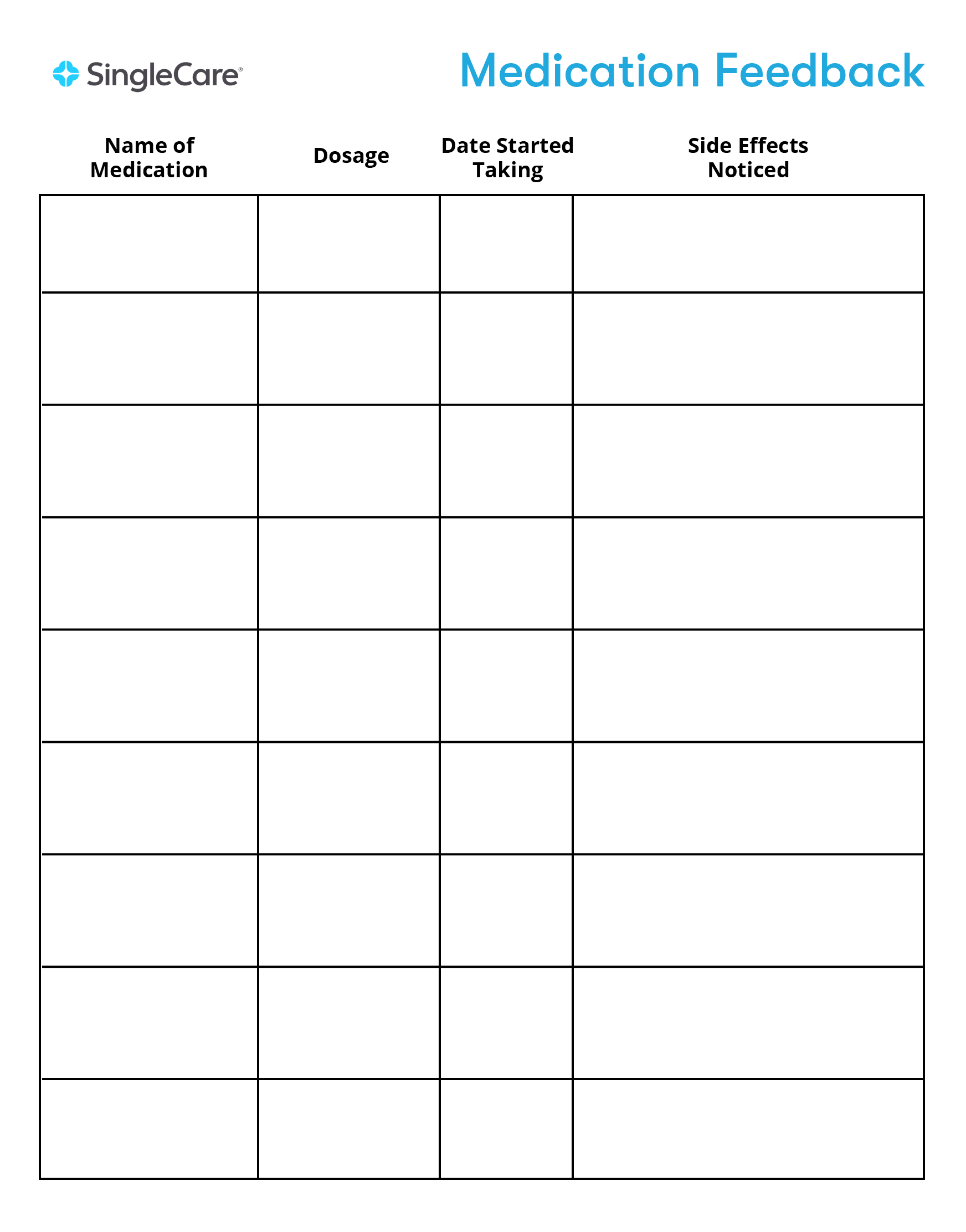Attention deficit hyperactivity disorder (ADHD) is a neurodevelopmental condition that is often diagnosed in childhood. Symptoms of ADHD may include inattention, impulsivity, and hyperactivity. There is no specific test for diagnosing ADHD in children—a medical professional may consider different factors like academic performance, family situation, and general behavior or habits into account before making a diagnosis.
How to help your child if they have ADHD
The most important thing a parent can do to help a child with ADHD symptoms is to seek help from medical professionals. According to Harvard Medical School, one-third to one-half of children with significant behavioral problems receive no treatment at all.
Treatment options for ADHD primarily include behavioral therapy and medication. Although more research is needed, diet and food supplements may also help alleviate ADHD symptoms. This guide will focus on medication for children with ADHD.
Should I medicate my child for ADHD?
There is no cookie-cutter approach to treating ADHD in children. Between you and your doctor, you should agree on a plan that serves your child best and be ready to adjust it to achieve good results.
Types of ADHD medication for children

Amphetamines and methylphenidate are the most common types of medication prescribed for children with ADHD. Both are considered stimulant medications. Amphetamines and methylphenidate help regulate certain chemicals in the brain, dopamine and norepinephrine, to increase cognitive control and improve focus, alertness, and attention.
One difference between the types of ADHD medications is how quickly they work to alleviate symptoms.
Short-acting stimulants are taken as symptoms arise and can start to work in as little as 30 minutes. The effects can be felt for up to six hours.
Long-acting stimulants are time-release drugs, sometimes delivered through a patch worn on the skin. They also come in pills, quick dissolve tablets, chewable, and liquid forms. Long-acting stimulants can work for 8 to 12 hours on average depending on the formulation.
Amphetamine stimulants
Short-acting amphetamine stimulants
- Adderall (amphetamine/dextroamphetamine)
- Dexedrine, Dextrostat (dextroamphetamine sulfate)
- Desoxyn (methamphetamine)
Long-acting amphetamine stimulants
- Adderall XR (amphetamine/dextroamphetamine)
- Dexedrine Spansules (dextroamphetamine sulfate)
- Vyvanse (lisdexamfetamine dimesylate)
Methylphenidate stimulants
Short-acting methylphenidate stimulants
- Focalin (dexmethylphenidate)
- Methylin (methylphenidate)
- Ritalin (methylphenidate)
Medium-acting methylphenidate stimulants
- Metadate CD (methylphenidate extended release)
- Methylin ER (methylphenidate sustained release)
- Ritalin LA (methylphenidate extended release)
Long-acting methylphenidate stimulants
- Concerta (methylphenidate)
- Daytrana (methylphenidate)
- Quillivant XR (methylphenidate)
Long-acting nonstimulants
- Strattera (atomoxetine)
- Qelbree (viloxazine extended-release capsules)
What ADHD medication is best for my child?
The ADHD medication that is best for your child will be the one that you and your doctor discuss and agree upon as part of your child’s overall treatment plan, which could also include cognitive behavioral therapy, school accommodations, and dietary changes.
Overall, long-acting ADHD medications are the most commonly prescribed treatment for children. Long-acting medications account for 78% of prescriptions for children age 17 and below.
A medication that works all day can be the best choice for children for several reasons.
- The medication is taken only once, usually early in the day, when the caregiver can supervise the child so that the medication is taken as intended.
- Since they only need to take one dose, the child doesn’t need to take time out of their day to get an additional dose from busy school nurses.
- Since no daily trips to the nurse are needed, the child won’t be singled out by peers wondering why they have to leave class every day.
- Patients taking long-acting medications report having better mental focus throughout the day, rather than experiencing highs and lows that can happen with multiple doses of short-acting medications.
- Because long-acting ADHD medications start working gradually throughout the day, studies indicate that patients on long-acting medications are less prone to develop drug abuse or dependence than patients on short-acting ADHD medications.
How will ADHD medication affect my child?
If ADHD medication is working, your child may show improvement in areas such as staying on task, paying attention in class, and making friends with their peers. At the same time, aggressive and oppositional behavior may decrease.
However, some children do experience side effects when taking ADHD medication. The most common side effects are sleep problems and decreased appetite.
Managing the side effects of ADHD medication

Sleep Problems
Children with ADHD often have trouble falling asleep, whether they are on medication or not.
In some cases, children who are taking ADHD medication find that they fall asleep easier. But, in other cases, delays in falling asleep or poor quality sleep are side effects of medication usually because of incorrect dosage or timing. As with any sleep disturbance, the initial step is to start a sleep diary, noting the child’s pre-bedtime routine and other factors, to identify strategies that could lead to more restful sleep. Ultimately, though, if the sleep disruption continues, a different medication might be considered.
ADHD medications are generally taken earlier in the day, so its effects wear off by bedtime.
Decreased Appetite / Delayed Growth / Stomach Issues
Some children who take ADHD medication may experience a decreased appetite or problems with growth development. This doesn’t happen to all children who take the medication. Many children continue growing the same as they were before taking medication while others may experience growth delays. For this reason, it is important to regularly track a child’s growth once they start on ADHD medication to identify any changes.
If a child is developing more slowly, nutritional changes may be recommended. Sometimes a child will stop taking the drug (called a “drug holiday“) in order to get back on a proper growth path. In some cases, the effects are severe and a different treatment may be needed.
It’s recommended to take ADHD medication along with meals to minimize the possibility of an upset stomach.
Tics
For many years, clinicians worried that ADHD medications exacerbated or caused tic disorders (sudden, uncontrollable movements). Recent research indicates that most ADHD medications don’t make tics worse and may help limit them. In rare cases, ADHD medication can make tics worse in which case, alternate treatments should be considered.
Tic disorders are common in children with ADHD and are known to increase or decrease in severity for no apparent reason. So an increase in tic behavior after starting medication could be more likely attributed to ADHD. ADHD medications may have the effect of increasing a child’s control over tics and reducing them.
If tics seem to worsen after taking stimulant medications, consult your child’s doctor before discontinuing treatment.
Mood Disorders / Suicidal Thoughts
Some children experience sadness, irritability, or other changes in mood when taking ADHD medication. This can happen with many medications, as the body adjusts to them. These effects usually fade over time.
Suicidal thoughts or feelings of hopelessness are a more serious matter. Adolescents may experience suicidal thoughts at any time, whether or not they have a diagnosed medical disorder. One ADHD drug, Strattera, increased the risk of suicidal thoughts in children and adolescents in a short-term study. It’s possible that other ADHD drugs may carry a risk of suicidal thoughts. Consult a doctor if you or your child has a history of depression or suicidal thoughts before starting an ADHD medication.
Monitor your child’s emotional health when they begin treatment for ADHD. If problems arise, changes to dosage may be considered by your care team.
Effective ADHD medication management for children
One of the more challenging aspects of ADHD treatment is a very simple one: Making sure the child takes their medication every day. Busy work and school schedules can get in the way, but these simple steps can help.
Medication list
A medication list is a smart step that will help keep you organized and give better feedback about how a medication is working for your child. Include these categories on your medication list.
- Name of medication
- Dosage
- Date started taking medication
- Side effects noticed
A medication list is also a good practical reference for trips to the pharmacy or other specialists your child may need to see.

Safe storage and organization
Keep ADHD medications in a locked container. Like any medication, ADHD medications can be dangerous if ingested in large quantities by small children and pets.
Further caution is needed with ADHD medications because many of them are controlled substances with a potential for abuse or dependence. Developing a dependency on ADHD medication is rare at the dosages typically prescribed. However, taking larger doses of ADHD medications on a regular basis could lead to physical or psychological dependence.
Anytime you have medication in your home that has a potential for abuse, you want to be sure they aren’t easily available to outsiders who might try to steal them. A locked container, kept in a place that isn’t easily accessible to your children (such as a high shelf in your bedroom closet) is a better storage option than simply putting them in the medicine cabinet.
Daily usage reminders
Some ADHD medications are only taken when symptoms occur. But for long-acting medications, it’s important to take them at the same time every day. Medication reminder apps can help ensure that your child gets the medications they need, when they need it.
How to get a child to take medicine
Most ADHD medications come as pills, which some children reject or struggle to swallow. If you are having trouble getting your child to take their ADHD medication, there are a few different techniques you can try.
Shaping or gradual introduction
Shaping introduces new experiences slowly, gradually increasing the intensity of the experience, such as swallowing pills, over time.
Stimulus fading is another technique to gradually help your child take their medicine. You can start by having your child swallow very small pill-shaped candies, then progress to larger and larger pills until they are able to safely swallow their ADHD pill.
Positive reinforcement
In the initial stages of taking a new medication, positive reinforcement can help turn the experience from a chore into something pleasant. Reward your child with a special treat or extra time doing their favorite activity after they successfully take their medication.
Modeling
Your child is more likely to be comfortable swallowing a pill if they see their parent or caregiver do it. Keep placebo pills on hand so you can demonstrate how to swallow pills, and show your child that swallowing pills is safe.
Pill swallowing techniques
Pillswallowing.org, a service of New York’s Northwell Health, recommends these three techniques for helping children swallow pills.
- 2-gulp method: Get the child’s favorite liquid, and place the pill on their tongue. Have them take one gulp of liquid and swallow without swallowing the pill. Then, immediately, take a second gulp of liquid right away, swallowing the pill and the water together.
- Straw technique: Get the child’s favorite liquid, and place the pill far back on the tongue. Have them drink the liquid through a straw, as quickly as they can. If the child is thinking about swallowing their favorite liquid rather than thinking about the pill, the pill will likely go down their throat. [Straw Technique Video]
- Pop bottle method: Get the child’s favorite liquid that comes in a bottle. Place the pill anywhere in the mouth. Have the child seal their lips and mouth over the open drink bottle. Tell them to keep their lips on the bottle while taking a swig of their favorite drink. This should allow the child to easily swallow both the liquid and the pill. [Pop Bottle Method Video]
As a final resort, you can use food to conceal the pill. Children who usually can’t swallow pills may be able to take their medicine when it’s combined with a spoonful of yogurt, applesauce, or peanut butter. Never crush a pill without consulting your care team, as your child may not get the proper dose.
Liquid medication
Most ADHD medications come as pills, but there are options available if your child can’t or won’t swallow them. For example, Quillivant XR is a liquid methylphenidate stimulant. However, these drugs usually cost much more than their pill counterparts and may not be covered by some insurance plans.
Medication is part of the total care plan for children with ADHD
As the parent or caregiver of a child with ADHD, you’re doing the right thing by learning about medication options for your child. The right medication, taken properly with simple life changes like improving diet and sleep, and other treatments like behavioral therapy, can help your child manage their ADHD and improve their overall quality of life.











